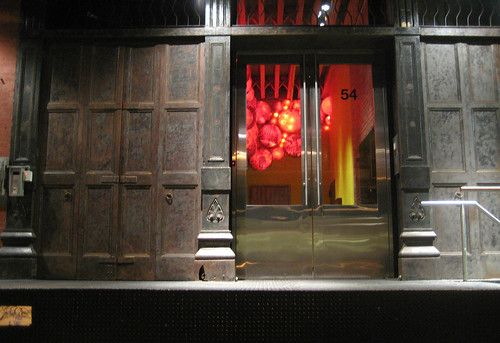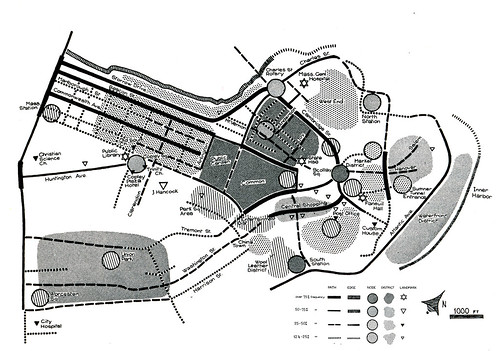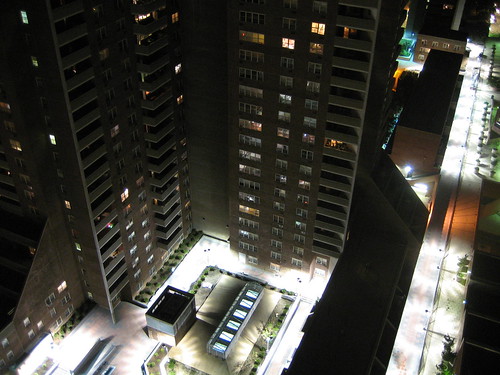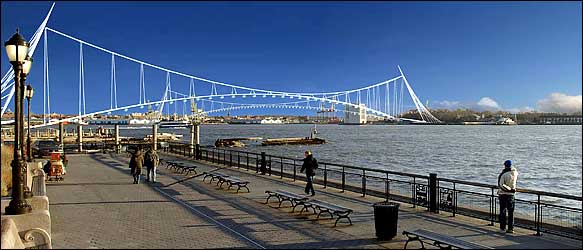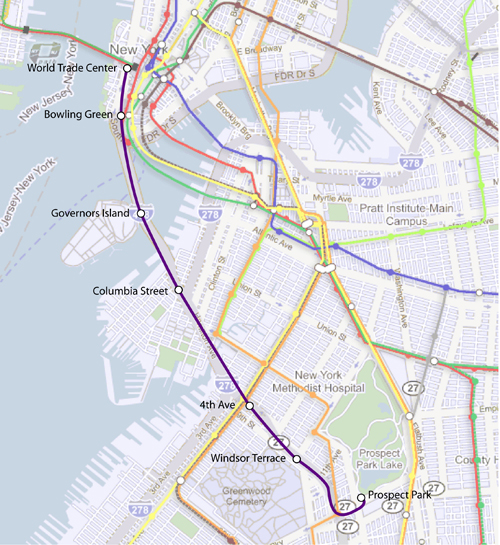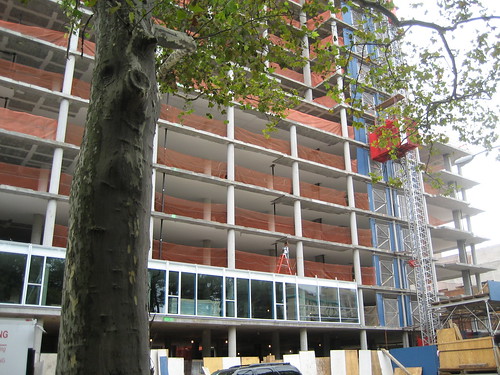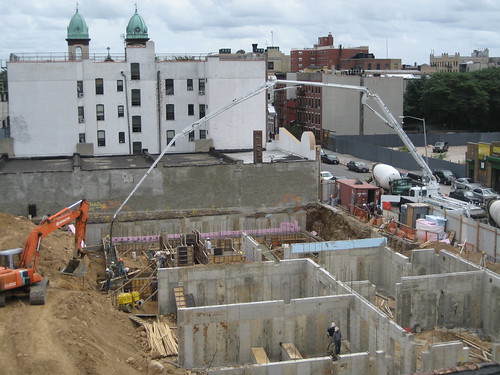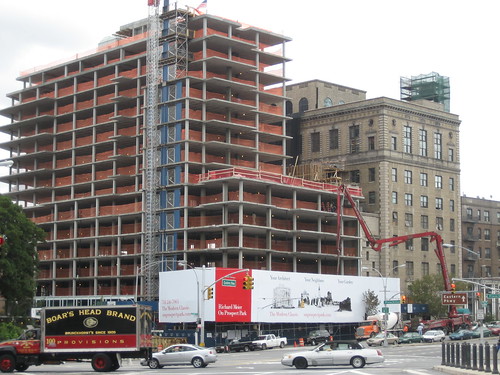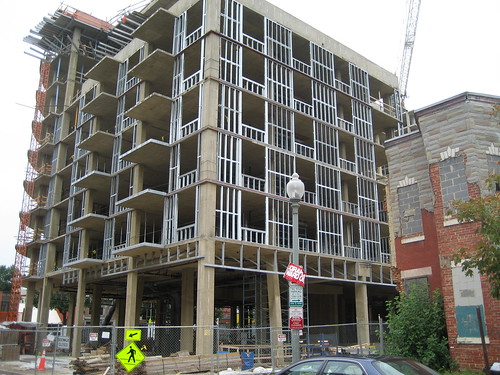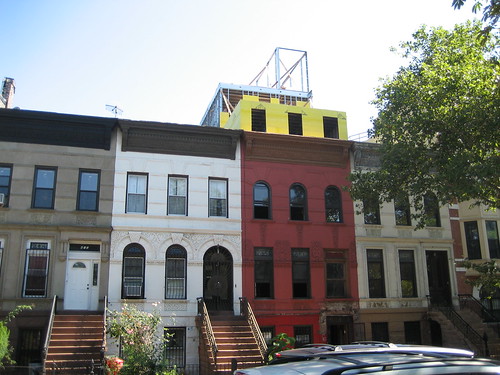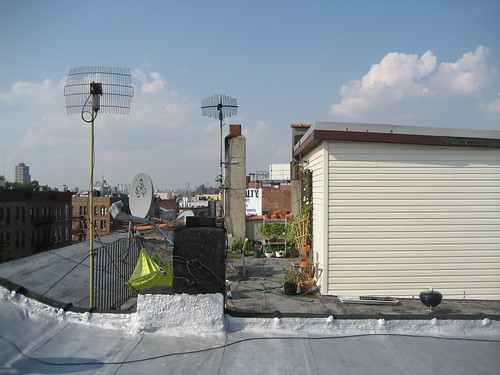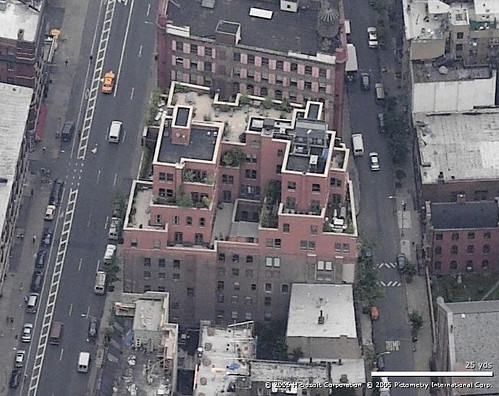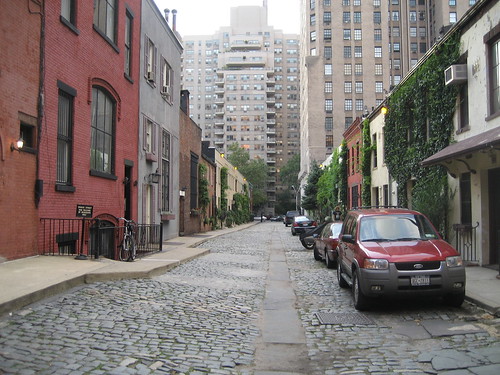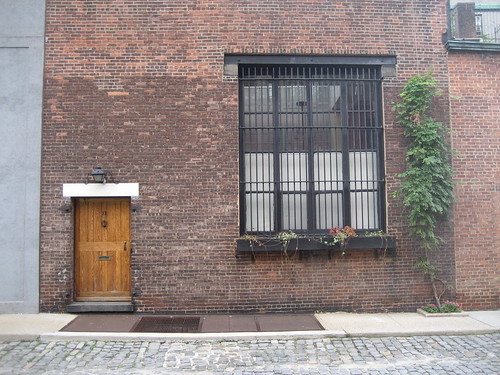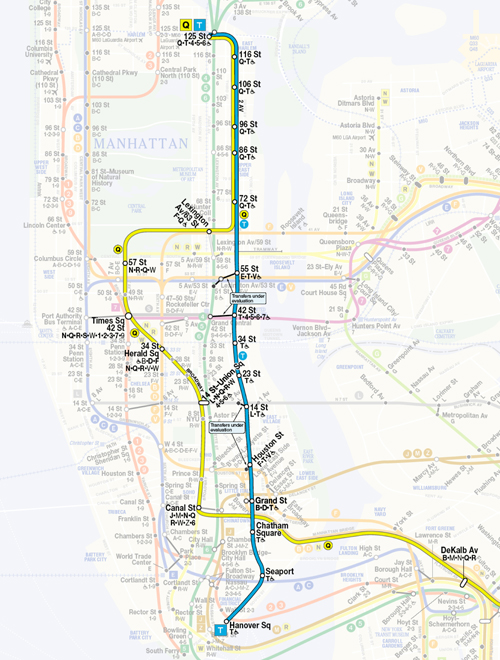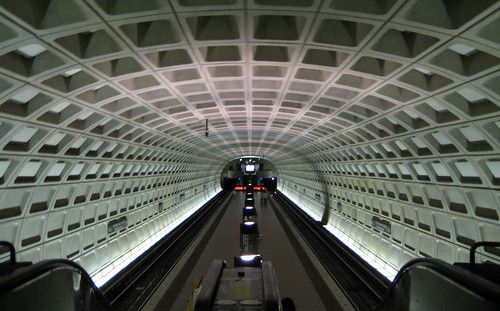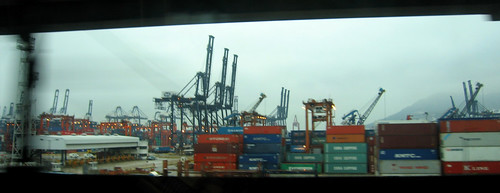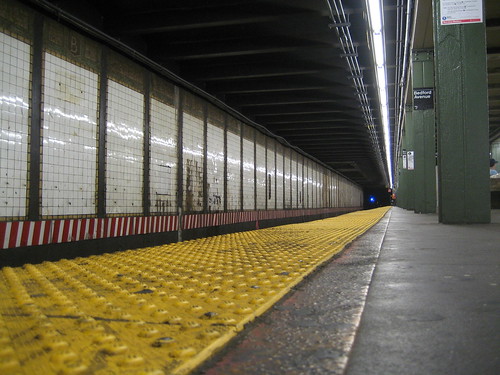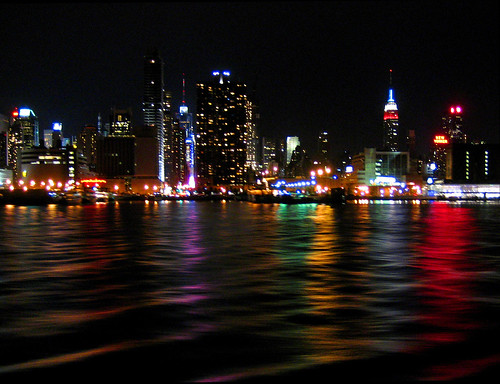best view in midtown
I've always thought that corners produced good architecture. Like Gehry's Fred and Ginger dancing in Prague or the Smurfit-Stone building's split diamond overlooking the Chicago waterfront, buildings on corners have the special ability to express themselves with two faces.
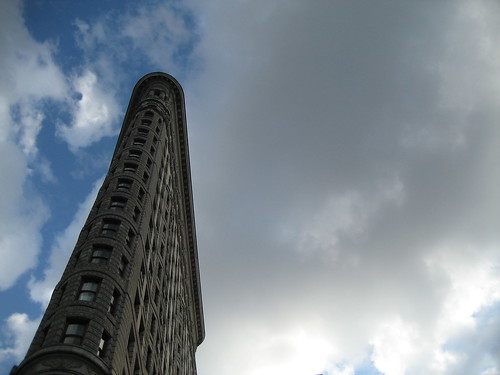
The world's most famous corner building may be New York's own Flatiron building. Built in 1902, Daniel Burnham's masterpiece slices 5th Avenue from Broadway at 23rd Street, its blade-like prow standing in contrast to the open space of Madison Park. One of New York's very first steel skyscrapers -- Burnham was a Chicago-based architect and planner -- the Flatiron building is an icon of Modern American design.
As much as I love looking at the Flatiron Building from the outside, I think the view is even better from inside. Thus I especially enjoy visiting my friend who works in a publishing firm on the 17th floor.
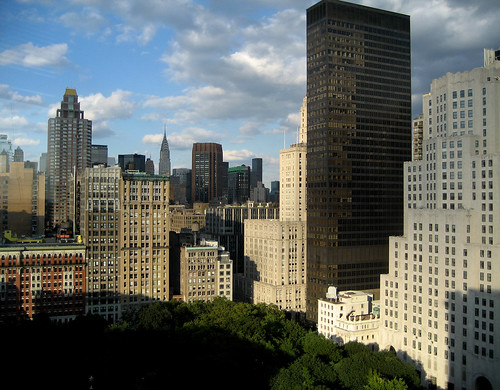
For an icon of Modern American design, the Flatiron building can be somewhat lacking in creature comforts. With a layout planned before the advent of the cubicle, offices and hallways often overlap. The elevators, despite their beautiful wrought-iron detailing, are among the slowest I've ever been on. Parts of the interior feel more like a Victorian house in Chicago than a midtown high-rise in Manhattan -- the structure is essentially an office tower designed before the modern office was invented.
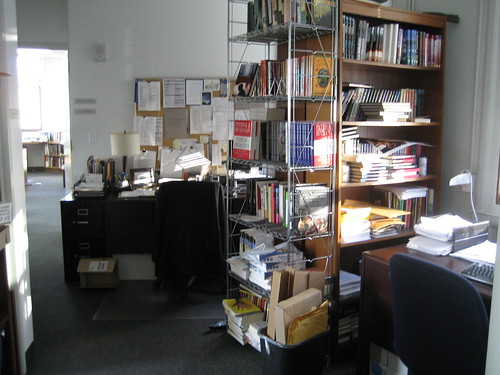
One quickly forgets about the quirky layout approaching a window, however, for the views from the Flatiron are incredible.
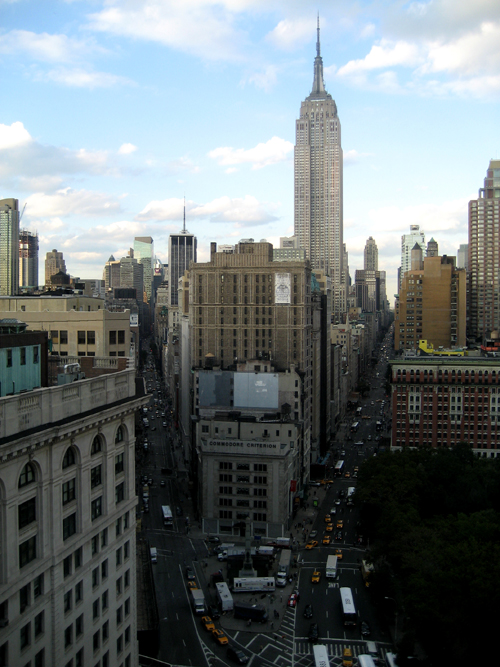
Nudging one's nose into the curved glass at the tip of the building, 270 degrees of unobstructed views present themselves to the observer. Down Broadway, past Herald Square, lies the southern tip of Times Square; up 5th Avenue, one can just pick out the green of Central Park. On port lies the Hudson, to starboard the East River. The spires of the Empire State Building and Chrysler Building punctuate an undulating skyline. In the immediate foreground teem the crowds of Madison Park (and the line for the Shake Shack.) It is the best view in midtown.
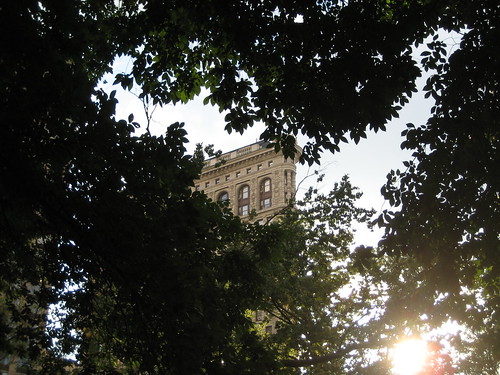
It still looks good from the ground too.

The world's most famous corner building may be New York's own Flatiron building. Built in 1902, Daniel Burnham's masterpiece slices 5th Avenue from Broadway at 23rd Street, its blade-like prow standing in contrast to the open space of Madison Park. One of New York's very first steel skyscrapers -- Burnham was a Chicago-based architect and planner -- the Flatiron building is an icon of Modern American design.
As much as I love looking at the Flatiron Building from the outside, I think the view is even better from inside. Thus I especially enjoy visiting my friend who works in a publishing firm on the 17th floor.

For an icon of Modern American design, the Flatiron building can be somewhat lacking in creature comforts. With a layout planned before the advent of the cubicle, offices and hallways often overlap. The elevators, despite their beautiful wrought-iron detailing, are among the slowest I've ever been on. Parts of the interior feel more like a Victorian house in Chicago than a midtown high-rise in Manhattan -- the structure is essentially an office tower designed before the modern office was invented.

One quickly forgets about the quirky layout approaching a window, however, for the views from the Flatiron are incredible.

Nudging one's nose into the curved glass at the tip of the building, 270 degrees of unobstructed views present themselves to the observer. Down Broadway, past Herald Square, lies the southern tip of Times Square; up 5th Avenue, one can just pick out the green of Central Park. On port lies the Hudson, to starboard the East River. The spires of the Empire State Building and Chrysler Building punctuate an undulating skyline. In the immediate foreground teem the crowds of Madison Park (and the line for the Shake Shack.) It is the best view in midtown.

It still looks good from the ground too.
